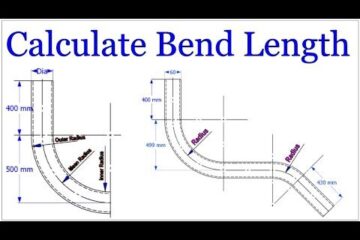In this article, you will learn how to replace a toilet flange by following a comprehensive step-by-step guide. The toilet flange, which is located beneath your toilet bowl, serves as a connection between the toilet and the sewer pipe. Over time, it may become damaged or worn out, leading to leaks and unpleasant odors. By equipping yourself with the knowledge and tools required, you can successfully replace a toilet flange and restore the functionality of your toilet. Follow these clear instructions to ensure a smooth and efficient process.
Gather the necessary tools and materials
List of required tools
Before you begin replacing a toilet flange, it is important to gather the necessary tools to ensure a smooth and efficient process. Here is a list of tools you will need:
- Adjustable wrench
- Screwdriver (flathead and Phillips)
- Hacksaw or reciprocating saw
- Putty knife
- Plunger or toilet auger
- Measuring tape
- Pliers
- Safety gloves
List of required materials
In addition to the tools, you will also need a few materials to complete the toilet flange replacement. Make sure you have the following items:
- New toilet flange
- Wax ring
- Screws or bolts for securing the flange
- Teflon tape
Prepare the work area
Turn off the water supply
Before starting any plumbing project, it is vital to turn off the water supply to the toilet. Locate the shut-off valve near the base of the toilet and turn it clockwise until it is fully closed. This will prevent any water from flowing into the toilet during the replacement process.
Empty the toilet bowl
To avoid any mess or spills, it is important to empty the toilet bowl before removing the toilet. Flush the toilet and hold down the handle to drain as much water as possible. If there is still water remaining in the bowl, use a plunger or toilet auger to remove it completely.
Clear the surrounding area
To provide ample space to work, clear away any objects or obstacles around the toilet. Remove rugs, towels, or any other items that may be in the way. This will ensure a safe and efficient process when removing and installing the toilet flange.
Remove the toilet
Disconnect the water supply line
Now that the work area is prepared, you can proceed to disconnect the water supply line from the toilet. Use an adjustable wrench to loosen the nut connecting the water supply line to the bottom of the toilet tank. Once loosened, carefully remove the supply line and place a towel or bucket underneath to catch any residual water.
Remove the toilet tank
Next, you will need to remove the toilet tank from the bowl. Start by unscrewing the nuts connecting the tank to the bowl using a screwdriver or an adjustable wrench. Once the nuts are removed, carefully lift the tank off the bowl and set it aside.
Remove the toilet bowl
With the tank removed, you can now focus on removing the toilet bowl. Begin by disconnecting the bolts located at the base of the toilet bowl. These bolts secure the bowl to the floor. Use a wrench to unscrew the nuts on the bolts and carefully lift the bowl off the floor, ensuring not to damage the surrounding area. It is recommended to have an extra pair of hands to help with this step due to the weight and bulkiness of the toilet bowl.
Inspect and clean the existing flange
Inspect the condition of the flange
Before installing the new flange, it is important to inspect the condition of the existing flange. Look for any signs of damage, corrosion, or cracks. If the flange is damaged, it is crucial to replace it to ensure a proper seal and prevent any future leaks.
Remove any debris or buildup
After inspecting the flange, remove any debris or buildup that may be present. Use a putty knife or a similar tool to scrape away any old wax or residue from the flange and the surrounding area. This will ensure a clean surface for the new flange installation.
Measure and mark the new flange position
Measure the distance from the wall
To properly position the new flange, measure the distance from the wall to the center of the drainpipe. This measurement will help ensure that the new flange is aligned correctly with the existing plumbing.
Mark the exact position for the new flange
Using a pencil or marker, mark the exact position for the new flange on the floor. Make sure to align it with the previously measured distance from the wall. This mark will serve as your guide during the installation process.
Remove the old flange
Detach the flange from the drainpipe
With the new flange position marked, you can now proceed to remove the old flange. Start by detaching it from the drainpipe. Depending on the type of flange, you may need to unscrew or pry it off using pliers or a screwdriver. Take caution not to damage the drainpipe in the process.
Remove any remaining wax ring
Once the old flange is removed, check for any remaining wax ring or residue. Use a putty knife or scraper to carefully remove any leftover wax or debris from the drainpipe. It is essential to have a clean and smooth surface for the new flange installation.
Install the new flange
Position the new flange over the drainpipe
With the old flange removed, it is now time to install the new flange. Align the new flange over the drainpipe, ensuring that it fits securely and snugly. Make sure the flange is centered and level with the marked position on the floor.
Secure the flange using screws or bolts
Once the new flange is positioned correctly, secure it in place using screws or bolts. Make sure to tighten them securely but be cautious not to over-tighten, as it may cause damage to the flange or the floor. Double-check that the flange is firmly attached and does not move or wobble.
Replace the wax ring
Place a new wax ring on the flange
Now that the new flange is securely in place, it is time to replace the wax ring. Take a new wax ring and position it on top of the flange, ensuring that the tapered side is facing up. Gently press the wax ring to ensure it adheres securely to the flange.
Center the ring properly
To ensure a proper seal, make sure the wax ring is centered properly on the flange. Take your time to align it correctly, ensuring it is evenly distributed around the flange. A properly centered wax ring is crucial for preventing leaks and maintaining the integrity of the toilet installation.
Reinstall the toilet
Position the toilet over the flange
With the wax ring in place, it is time to reinstall the toilet bowl. Carefully lift the toilet bowl and position it over the flange and the wax ring. Make sure the bowl is aligned with the bolts on the floor and slowly lower it down, ensuring the wax ring compresses evenly.
Apply downward pressure to seal the wax ring
Once the toilet bowl is in place, apply downward pressure on the bowl to create a proper seal with the wax ring. Press down firmly but gently, ensuring the toilet is seated securely on the wax ring and the flange. This will ensure a watertight seal and prevent any leaks.
Test for leaks
Flush the toilet and check for any leaks
After reinstalling the toilet, turn on the water supply and flush the toilet. Monitor the base of the toilet and the surrounding area for any signs of leakage. If you notice any water seeping out, it may indicate an improper seal. In this case, you may need to repeat the installation process, ensuring the wax ring is centered properly and the toilet is seated securely.
Inspect for proper functionality
Once you have tested for leaks, inspect the toilet for proper functionality. Ensure that it flushes correctly and refills the tank as intended. Additionally, check for any wobbling or movement of the toilet bowl. If everything is functioning properly and the toilet is stable, then the replacement of the toilet flange is complete.
In conclusion, replacing a toilet flange may seem like a daunting task, but by following these step-by-step instructions, you can successfully complete the process. Remember to gather all the necessary tools and materials, prepare the work area, remove the toilet, inspect and clean the existing flange, measure and mark the new flange position, remove the old flange, install the new flange, replace the wax ring, reinstall the toilet, and finally, test for leaks and inspect for proper functionality. With patience and attention to detail, you can ensure a successful toilet flange replacement, eliminating any future plumbing issues and maintaining the functionality of your toilet.


